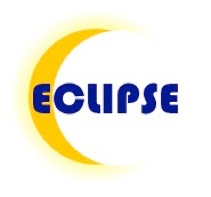Sandra's views on the amount light 'bends' on entering glass
Sandra was a participant in the Understanding Science project. Sandra was in year 8 when she told me that light:
“can travel through air and stuff, and glass which makes it bend… because it is coming in at a speed, and it slows down when it is going through glass, and part of it will slow down first, and then so it will bend.”
She explained that:
“I think if it goes in at a straight line, it will come out straight. (But) if it comes in … sort of at an angle, the part, like, the part that hits it first, will slow down, sort of bend when it comes out.”
This was because:
“say the light’s like that thick, it’s that this bit will slow down first, because it has hit it first, it will start bending that way, and then go straight.”
Sandra had undertaken practical work with ray boxes and glass blocks, so I asked her whether if you change the thickness of the beam of light that would change the effect. She thought it would. She had not tried this, but when I asked if a thicker beam would turn more she thought that it “probably” would. She also agreed that “probably” a very, very thin beam of light would not bend very much, because it would all be hitting the glass at more or less the same time. Sandra would not speculate on what would happen with ‘an infinitely thin beam of light’.
In practice the ‘bending’ (deflection of the direction) of the light does not depend upon the thickness of the beam (that is normally understood by physicists as either progressive wave, or a stream of photons of electromagnetic radiation). The common teaching model of refraction is based on an analogy with very different physical systems (soldiers marching across, or vehicles with their wheels hitting, a change of surface at different points in time). Students often relate to these examples and can visualise how they lead to a change in direction for the soldiers or vehicle. This is therefore a very useful model for getting students to form a mental model of what is going on, and therefore to both make refraction seems less abstract and help them remember the phenomenon.
Unfortunately, this teaching model offers little insights into the mechanism of refraction, and if the learner adopts this as an explanation for how refraction occurs, it soon causes problems. Sandra used her mental model of light refraction, based upon this teaching model, and used this to predict how the degree of defection should be different for beams of different thickness. She drew sensible conclusions in terms of the model, but unfortunately her predictions do not match what actually happens when light is refracted because the model used does not represent the actual physical system.
Understanding refraction in terms of a teaching that relies on the thickness of the analogue to give rise to a change in direction, despite its accessibility to learners, can obstruct learning about the nature of light, and so acts as a grounded learning impediment. As this particular learning impediment derives from teaching, it can be classed as a pedagogical learning impediment.
Return to ECLIPSE homepage
List of science topics

Dr Keith S Taber kst24@cam.ac.uk
University of Cambridge Faculty of Education